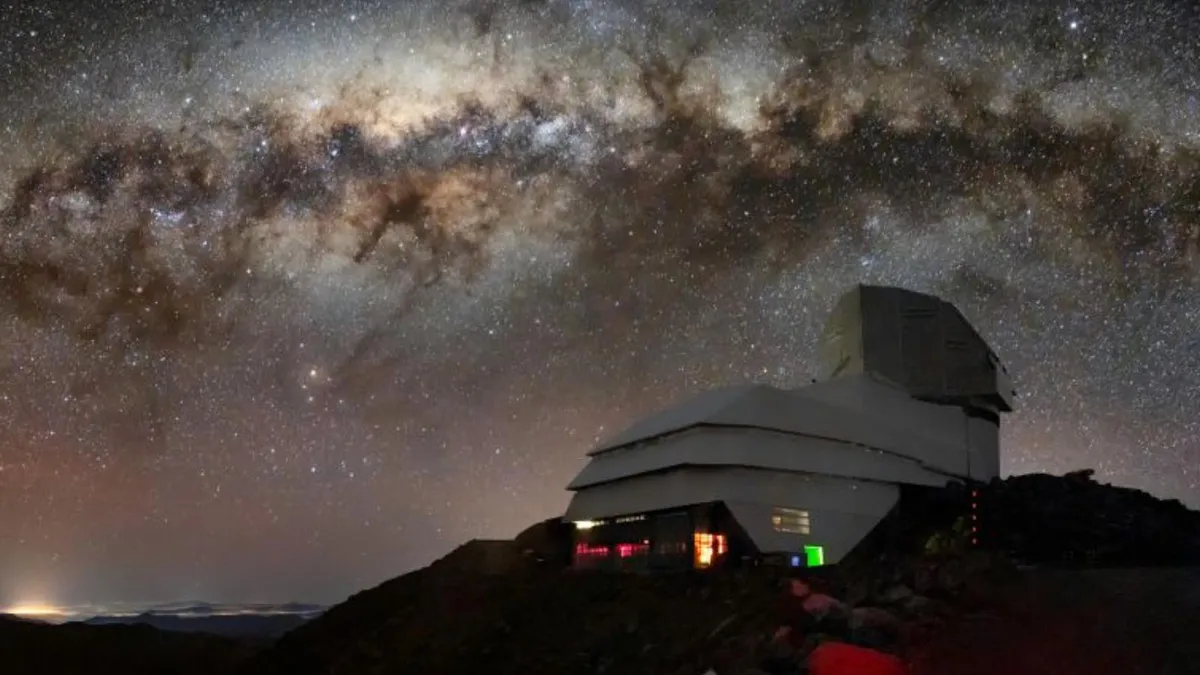
On Monday, June 23, the public and the broader scientific community will have their first opportunity to view stunning images from the Vera C. Rubin Observatory. This moment is poised to be a landmark event in astronomy, rivaling the excitement surrounding the initial images released from the James Webb Space Telescope (JWST) in the summer of 2022. Built by the National Science Foundation and the U.S. Department of Energy's Office of Science, the observatory is strategically located on the peak of Cerro Pachón in northern Chile, a region known for its exceptionally clear skies.
Once operational, the Rubin Observatory aims to create what Željko Ivezić, the observatory's construction director, calls "the greatest movie of all time" and the most comprehensive map of the night sky ever constructed. Featuring an impressive 8.4-meter telescope equipped with the world’s largest digital camera, the observatory will embark on the decade-long Legacy Survey of Space and Time (LSST). This ambitious project will capture images of the entire southern sky every three nights, revealing the universe like never before.
To prepare for this monumental unveiling, Space.com engaged with a diverse group of scientists associated with the observatory, along with other astronomy enthusiasts eager to witness the groundbreaking images and data that this advanced telescope is set to uncover. However, these experts remain tight-lipped about what specific images will be revealed. Researcher Andrés Alejandro Plazas Malagón from Stanford University and a member of the Rubin Observatory’s Community Science Team remarked, "People are going to be amazed by what we can see already."
Plazas Malagón expressed particular excitement about utilizing the largest digital camera for astronomy, the LSSTCam, boasting a remarkable 3.2 gigapixels. Over the 10-year survey period, this camera will gather unprecedented amounts of data, allowing astronomers to tackle fundamental open questions in the field.
Another prominent scientist, Mireia Montes, a Ramón y Cajal Fellow at the Institute of Space Sciences (ICE-CSIC), highlighted the significance of the Rubin Observatory for tracking stars drifting between galaxies through the faint intracluster light they emit. She noted that traditional surveys are often limited by their area coverage or depth, adhering to the "wedding cake strategy." In contrast, the Rubin Observatory will combine both depth and area in its surveys, providing a clearer view of previously obscured celestial objects.
"The night sky is not as dark as we perceive it," Montes explained. "Deep images will showcase objects—like stars and galaxies—everywhere you look. I believe the public will be astonished by the density of objects in these images, akin to our reaction to the Hubble Deep Field, but on an entirely different scale due to the enormity of Rubin's camera."
The Rubin Observatory's wide-field view and the LSST's data collection will play a crucial role in addressing longstanding mysteries surrounding dark energy, which constitutes about 68% of the universe's matter-energy content and drives the acceleration of cosmic expansion. It’s staggering to consider that, despite significant advancements in science, humanity only comprehends approximately 5% of the universe's contents, primarily baryonic matter made up of atoms.
The remaining matter is categorized as the dark universe, which includes both dark energy and dark matter—each accounting for about 17% of the universe's energy but remaining elusive because it does not interact with light. According to Plazas Malagón, the LSST will revolutionize our understanding of dark energy by measuring the shapes and properties of billions of galaxies, surpassing the scale of current photometric galaxy surveys.
Through its detailed mapping, the LSST will allow scientists to probe the growth of the universe's large-scale structure, often referred to as the cosmic web, which is dominated by dark matter. Additionally, it will utilize the phenomenon of gravitational lensing to investigate dark matter distribution around large galaxies and explore various properties of dark matter, including potential self-interactions and the existence of primordial black holes.
Among the significant questions the Rubin Observatory aims to address is the possibility of undiscovered planets in the outer solar system, the nature of explosive cosmic events, and the formation and evolution of stars. As Luz Ángela García Peñaloza, a cosmologist from Bogotá, Colombia, stated, "Rubin's first image release is an incredible milestone for the astronomical community." She emphasized that this observatory will capture the light of approximately 20 billion galaxies.
As the Rubin Observatory embarks on its mission, it promises to enhance our understanding of the universe significantly. Not only will it excel in studying galaxies, but it will also provide insights into the faint light emitted by stars between galaxies. With the ability to detect failed stars or brown dwarfs, the observatory will expand our catalog of these cosmic bodies by a factor of 20, aiding in our understanding of star formation.
Amateur astronomer Giuseppe Donatiello, who has discovered several dwarf galaxies, emphasized the importance of maintaining an open mind for unexpected discoveries that the Rubin Observatory will facilitate. "Nature is more imaginative than we are," he noted, highlighting the revolutionary potential of the LSST.
In conclusion, the unveiling of the first images from the Vera C. Rubin Observatory marks a transformative moment in astronomy. As scientists eagerly await the data, the Rubin Observatory is poised to answer questions we have yet to ask and unveil the mysteries of the universe.